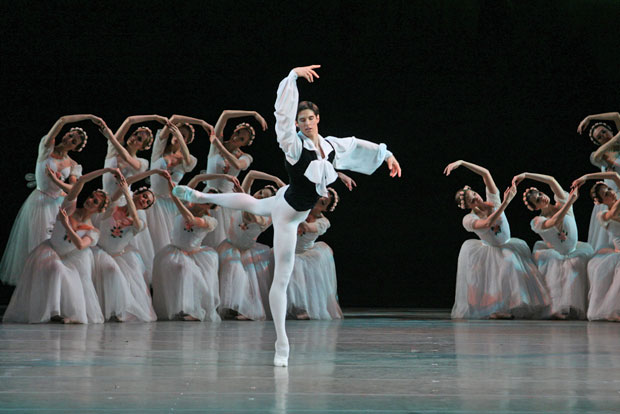
© Natasha Razina. (Click image for larger version)
Mariinsky Ballet
The Ballets of Mikhail Fokine: Chopiniana (Les Sylphides), The Firebird, Scheherazade
St. Petersburg, Mariinsky Theatre
25 April 2014
www.mariinsky.ru
The old building of the Mariinsky Theatre is looking as grand and familiar as ever as it now nestles alongside the transparent glass and shine of its new-born sister – the eleven-month-old Mariinsky II. The sun was still shining strongly when I, together with a load of bussed-in tourists from many countries, turned up at the theatre’s doors at 6:40pm in plenty of time to be in our seats for the evening’s triple bill. And plenty of time we ended up having! Recently the starting times of the two Mariinskys and the concert hall have changed from the traditional 7pm, to a mix of 7:00; 7:30 and 8pm starts, to give audiences a chance to come and go without being too crowded. My Mariinsky evening began at a bewildering 7:40pm. This meant, that with very long intervals, the curtain didn’t come down until 10:30pm and several members of the public, with buses to catch, had to creep out of the auditorium at the height of one of the sexiest orgy scenes in Scheherazade I have witnessed!
But purity first, and when the curtain eventually lifted – after a brisk and compelling overture conducted by Boris Gruzin – we were wafted into another world, visually and metaphorically. The Mariinsky Ballet’s Chopiniana (Les Sylphides) is a tulle delight, a dreamy invitation back into the past when there were such things as sylphs who frolicked in meadows in the moonlight, under green willow trees. The ballet we saw this night was given life by the Mariinsky dancers, (many performances elsewhere have often made it a soporific opening to an evening), and for these sylphs, the moment to dance and pose, was a joyous opportunity.
This revised version by Agrippina Vaganova of Mikhail Fokine’s abstract Romantic era ballet opens on a tableau of motionless sylphs, their arms crooked over their slightly-leaning heads as they stand around the posed leading quartet. As the music calls them, those in front slowly turn to face the audience and bourée to sink and kneel smoothly with their angel-winged tarlatans puffing out around them like meringues. A vision of beauty – and well worth the unexpected wait at the front doors earlier.

© Natasha Razina. (Click image for larger version)
Making her debut in the Eleventh waltz was Tatiana Tiliguzova, a member of the corps. She proved herself with fluid, light-as-thistledown jetes, (though her pointe shoes made a loud clunk on landing), easy balances and arabesque balances. Xenia Ostreikovskaya (coryphée) danced the Mazurka, swiftly crossing the stage in diagonals in high-flying jetes and a sense of freedom and exhilaration. Viktoria Krasnokutskaya (coryphée) performed the Prelude with dignified ethereal action and a great breadth of fluid movement. But it was the Poet who impressed so much – ‘our’ Xander Parish, who is going from strength to strength here in St Petersburg, and sadly not in London! In this role he was dignified, assured, jumping with lightness and soft landings. He executed elegance and, with the right ingredients – height, good looks, fine partnering skills and technical abilities – he’s a danseur noble in the making – though he’s pretty good at the job already!
The corps must be congratulated for the ball-bearing precision in their soft gentle boureeing, gliding gently back to their original positions as the music ended. A real treat to see it done so beautifully.

© V Baranovsky. (Click image for larger version)
After the first of two very long intervals it was time for The Firebird and again, the resounding overture from the orchestra pit built the suspense and mystery of the story. The curtain rose on a darkened stage, which was suddenly flooded with red light as the Firebird flitted diagonally across into the wings. A thud announced Ivan Tsarevich’s arrival over the wall into the magic garden, Andrei Yermakov is a personable, good-looking young man and he made the role animated and realistic, showing clearly his puzzlement of the mysteries around him rather than just miming abstractly. He made a point of studying the wall of captured boyars and demonstrated well the magnetic pull the wall had on him. In his dealings with the Firebird, he first focused on capturing her, but then was fascinated by her as she succumbed to her situation – there was a real connection between the two. When he met the Princess of Great Beauty he cut a romantic figure, falling hopelessly in love with her at first sight. He became a fearless firebrand when captured by Kashchei’s evil cronies and delighted in teasing the malevolent magician with the egg that contains his immortal soul. Yulia Stepanova was the Firebird and offered swift and sharp neat footwork. She flitted well and showed her initial fear when captured, with large wide-open eyes and flutterings. She strongly showed her powers over Kashchei’s kingdom, despite the vast numbers of monsters that confronted her, and she wove her magic spell with conviction and grace. The ‘cast of thousands’ of unsightly characters that formed this kingdom ranged from Worzel Gummidge
Creatures with straw flapping from arms and legs; skull-headed, armadillo-shelled guards; mop-headed figures with undulating hips; wart-covered ugly monsters and Kashchei himself – wizened-faced with a pointy nose covered with unsightly growths, and long gnarled fingers and bird’s feet.
The twelve captured maidens were about as good as the English cricket team in catching and throwing, and many of their dropped golden apples had to be surreptitiously kicked out of the way of the dancers. Their Princess, (Yekaterina Mikhailovtseva) was a beauty with long golden curls, who danced with elegance and offered a fuller, more effective vision of her role.

© Natasha Razina. (Click image for larger version)
The final ballet was Scheherazade, filled with oriental promise. And once again, there was delight in seeing one of the company’s unsung, but always so memorable, character figures – Vladimir Ponomarev. As Shah Shahryar, he pored over his favourite concubine, Zobeide, doling out jewels and smothering her in embraces. Unconvinced in believing his brother’s whisperings that she would prove unfaithful to him, he went along with the test to prove him wrong. As soon as he had left on a hunting trip, Zobeide (Viktoria Tereshkina performing the role for the first time) and the rest of the harem set off for their own fun and pleasures. The doddering Chief Eunuch (always a role overplayed with silliness) relinquished the keys to the slaves’ cells, and out poured a handsome and well-dressed bunch of slaves, ripe for an evening of exotic delights. They wore pale purple silken pants and white jewelled ‘bra’ tops, and pounced nimbly on the willing harem girls.
Then Zobeide opened the door of the Golden Slave’s cell and out flew – literally – Vladimir Shklyarov, also making his debut in the role. He moved so fast that he seemed like a golden arrow shot from a bow towards its target. And he glistened from top to toe in the vast quantities of oil on his skin onto which gold sparkle had liberally been distributed. But what a lusty slave! It was no wonder Zobeide’s passions leapt up several notches. He raced around her so fast and so high that her eyes could barely keep up with him. And as he began to paw at her body, she went limp with delight. However, Tereshkina was not to be outdone by Shklyarov’s performance and offered slinky, sultry and sensual movements, bending her body with anticipation. Yes, this turned out to be the most erotic Scheherazade I’ve seen in a long time. Both of the principal dancers, backed up by a convincing company, evidenced excellent performances – not just in technically performing the steps but imbuing them with depth and feeling. There seems no doubt that they will enjoy much success (in different roles), when they – and the Mariinsky company – come to London in the summer.







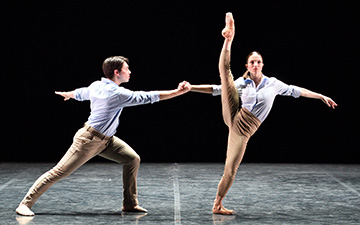
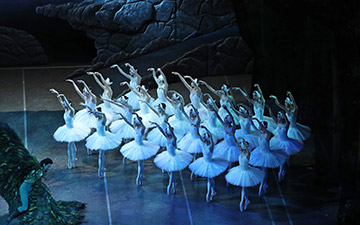

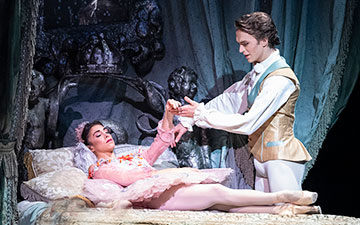


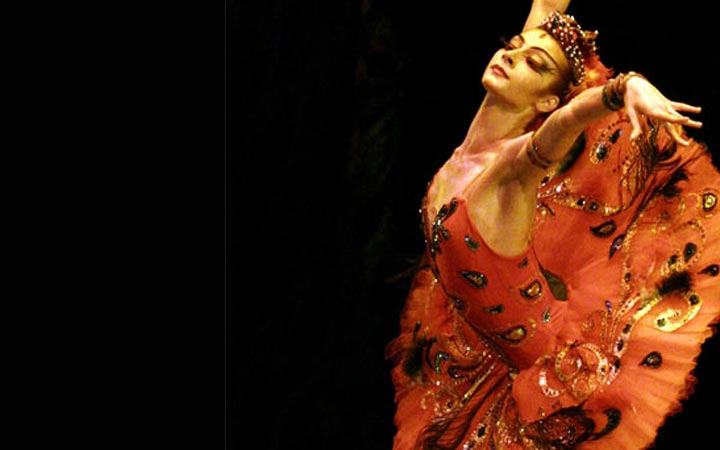
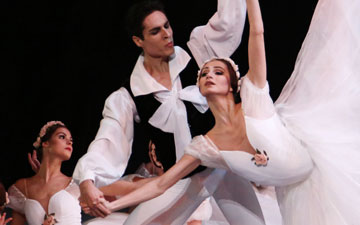


You must be logged in to post a comment.